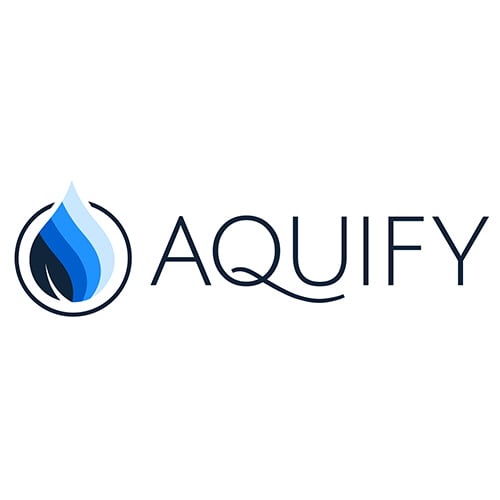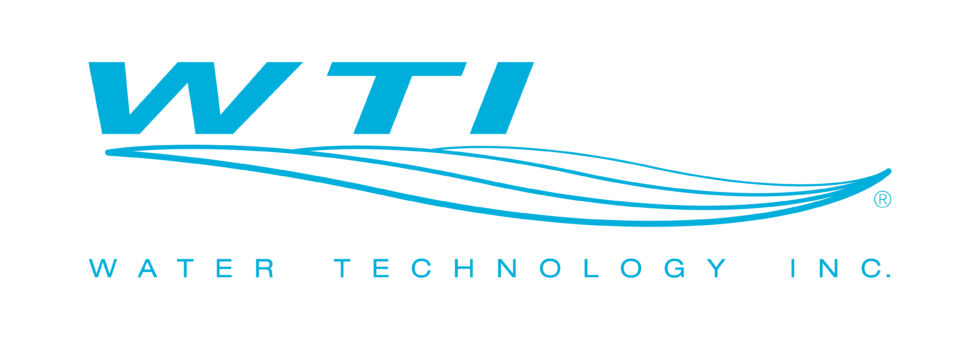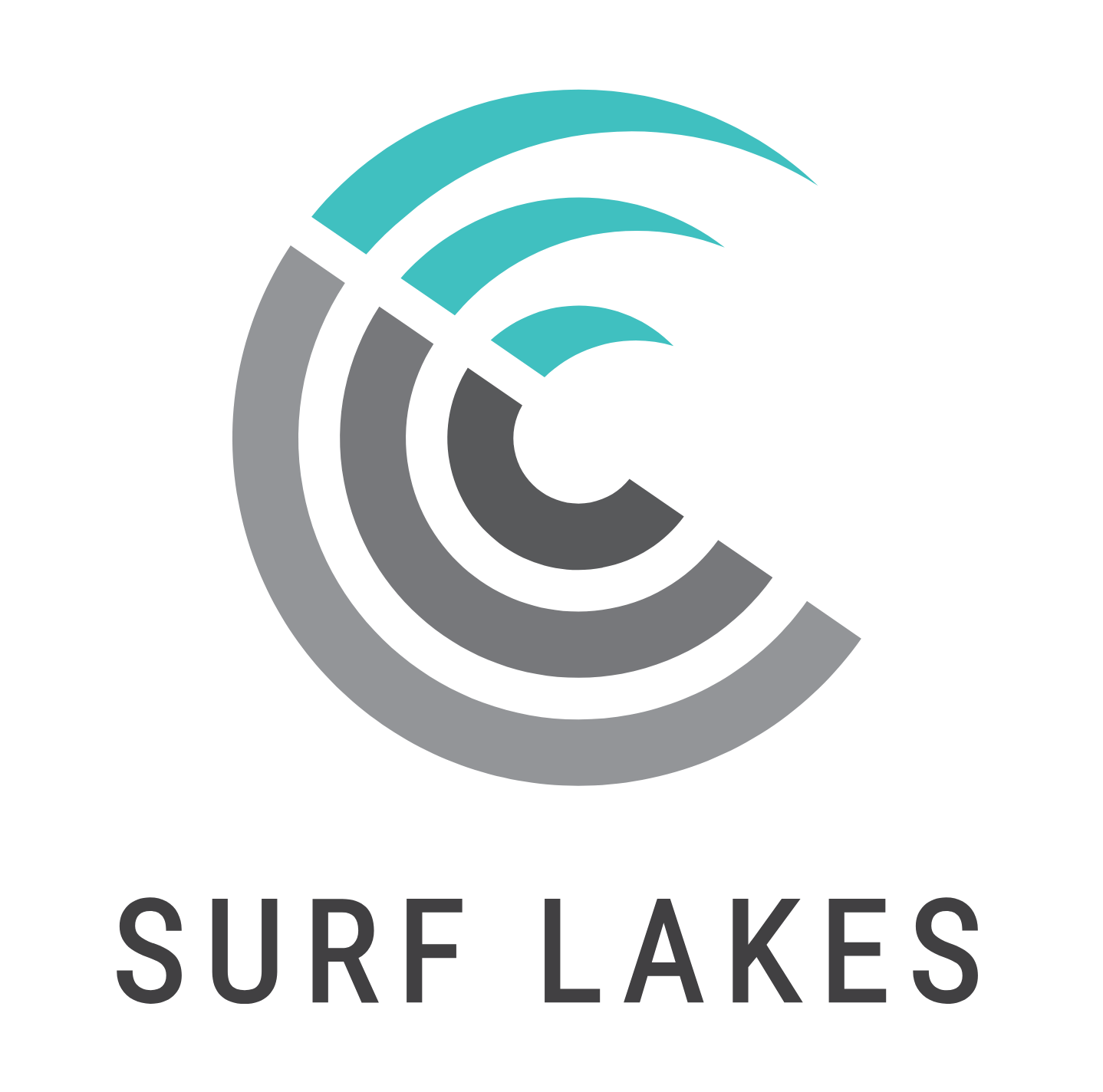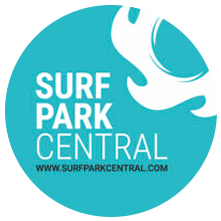Guest post from Cloward H20:
One of the most important aspects of a Surf Park is the quality of the water in the lagoon. This is important from an aesthetics perspective, but also because of the potential impacts for the health and safety of the patrons. Most people judge the quality of the water by its clarity, for most, clear water is clean water. Water clarity is only one variable in good water quality and just because the water is murky does not necessarily mean that the quality is poor. However, it may be a precursor to other water quality issues.
Water quality is a balancing act involving a number of important factors. These factors generally apply to both fresh and salt water. There are four keys at are critical mechanisms for maintaining proper water quality. They are Circulation, Filtration, Sanitation, and Distribution and Collection.

Circulation
Circulation is the mechanism use to move water from the lagoon, through the treatment system components, and then return the water to the lagoon. Proper circulation prevents the formation of dead zones of stagnant water, which harbor potential problems for the rest of the lagoon. These areas collect garbage, oils, and provide a home for algae growth. Circulation is typically provided by a water treatment pump, which moves water through the treatment system and may be supplemented by other pumps that move water from one corner of a lagoon to another. Generally additional circulation pumps are not necessary because of the wave action in the lagoon, however, this is dependent upon the geometry of the lagoon shore.
Water treatment circulation pumps are typically located in a pump well within a mechanical building. Thus creating a secure and out of the public view, accessible only to authorized maintenance and operational staff. Mechanical buildings are also useful in abating motor and other mechanical operational noise.
Utilizing high efficiency pump motors, and Variable Frequency Drives (VFDs) the operational power costs can be optimized. The potential for operational savings is greatest when using VFDs. These devices allow the pump motor to operate by controlling the rotational speed of the motor to correspond to the amount of energy to move the water in the system. Motors without VFDs require mechanical restrictions to accomplish the same task. By reducing the motor speed, the power feed into the motor is also reduced, resulting in lower power costs.
Generally, submersible style pumps manufactured by Flygt, KSB, or others are specified based upon design parameters of design flow, discharge pressure, motor power, and motor voltage. Another consideration is materials of construction. Depending upon whether the water source is fresh or salt water. Salt water requires materials that are corrosion resistant, which tend to be more expensive to purchase and to maintain.
Filtration
There are several different filtration technologies that can be utilized to provide the level of filtration necessary to achieve favorable results. There are several factors that are part of the selection process. The quality of the source water is one factor. In some cases, it may be necessary to filter the water from the source to reduce the loading of the treatment filters.
Permanent media filters capable of removing 20+ micron particle sizes to maintain levels of quality and clarity in the water are a good option for most facilities. Regenerative media filters are another option and provide a higher particle removal rate, as they are capable of removing particles that are 1 micron. Either of these filter technologies are characteristically extremely efficient from a water usage perspective and will operate with negligible water loss as a result of filter cleaning.

Sanitation
Sanitation is process of controlling organics such as algae and pathogens and typically achieved through the introduction of chlorine, which oxidizes the organics and prevents their growth and spread. It is a function of the level of contaminants that are brought in by the source water, environmental conditions, and patrons in the water, known as bather load.
The use of ozone as the primary sanitation and oxidization source can substantially reduce chlorine and other chemical usage. Ozone is a powerful oxidizer that literally rips organisms and organic compounds apart, which reacting very quickly in water. As a result, ozone does not maintain a residual presence in the main water body. Chlorine is used to satisfy the chemical residual requirements of the local health and safety agencies. Ozone performs the majority of the sanitation of the water, thus reducing the amount of chlorine required.
Ozone generation and injection is sized based upon the anticipated contaminant load and total water volume being treated. Ozone is controlled by Oxidation Reduction Potential (ORP) and is measure separately from the chemical residual ORP. Residual Sanitizer (Chlorine) and pH (Acid) Adjustment is accomplished by the use of a chemical controller and automatic chemical feed pumps. Chemical storage tanks are sized to contain 1-2 weeks (minimum) volume required for dosing at anticipated rates and should be placed in separate and independently ventilated area of the mechanical building.
Inlet Distribution and Collection
Treated water is circulated back into the lagoon and evenly distributed throughout to provide the proper circulation patterns when the wave is not in action. During the wave generation operation mechanical action from the mechanism will provide excellent mixing and agitation of the entire water body.
Drains are strategically placed to help facilitate the overall circulation of the water volume. The drains will help collect debris that settles to the bottom of the lagoon removing it to the treatment system. The use of gutters at the water surface allows for the collection and removal of floating debris, such as leaves and garbage, and oils from sunscreen.
Salt Water Versus Fresh Water
One of the key questions in the development of a surf lagoon is what is the primary water source. If the project is near a natural fresh water sources, such as a river or lake, it may be the primary choice over using a culinary water source. If a project is located adjacent to a seawater source, it may also be an attractive primary water source. There are environmental considerations and regulations when using natural water sources, whether it be a fresh or salt water source. In most cases the water must be returned to the downstream source in a similar condition as to what it was to begin with.
There are also considerations that can significantly impact the development of a project in regards to both source types. Salt water has a natural tendency to be more corrosive than fresh water. As a result, there is a consideration as to the type of materials that should be used with the circulation and treatment equipment, such as FRP pumps and filter vessels.
There are some naturally occurring elements, namely bromine salts, in some seawater that can be used in conjunction with ozone to create disinfectants (Hypobromus Acid) that are comparable to chlorine. By taking advantage of these naturally occurring disinfectant and providing a means to maintain appropriate levels in the water it can replace the need to add chlorine disinfection.
Another consideration is the possibility of concentrating salts. As water from the lagoon evaporates the salt components remain. To maintain the water level in the lagoon more salt water is added. This repetitive process can lead to higher salt concentrations that can become problematic. This can be countered by adding fresh water to reduce the concentrations or exchanging a certain volume of water to maintain a more constant salt concentration.
Saltwater also tends to have a higher nutrient load that can contribute to biological growth, such as algae. While the treatment system is designed to curb this type of growth, there is still a potential for biological growth to occur, particularly at the water line.
There are two main methods for bringing in water from a seawater source. One is by a seawater intake, which is typically a pipeline that extends out into the sea. It is recommended that two intake lines be installed, one for service and one for standby. Typically, one line is used for one or two months, while the other line is allowed to go anaerobic to kill off any biological growth inside the pipe. After the time period, the standby line would be cleaned out, by the use of a pigging system and then put into service and the service line would be put into standby. A seawater intake also has the potential to introduce aquatic life to the lagoon. Small fish, crustaceans, and coral pups can pass through intake pump impellers and unless they are filtered and find their way into the lagoon.
Another method is the use of salt water wells. These are typically wells that are drilled near the seawater source. The water is drawn through a sand bed, which eliminates some of the problems inherent with a sea water intake, by providing a level of filtration. There is a potential for the well to find a layer where the water is anaerobic, which would make the source unsuitable.
Return salt water can be accomplished in similar manners, through injection wells or through an outfall pipe line. Both methods are subject to regulations for water quality to be consistent with the existing water conditions.
Freshwater sources offer similar challenges. Common sources are culinary water, well water, river or stream water, and lake or reservoir water. Culinary water is the simplest source from a water quality point of view, but is also one of the costlier options. When considering the other sources water rights become a serious consideration. Along with the quality of the source water and the requirements for returning the water.























You must be logged in to post a comment Login